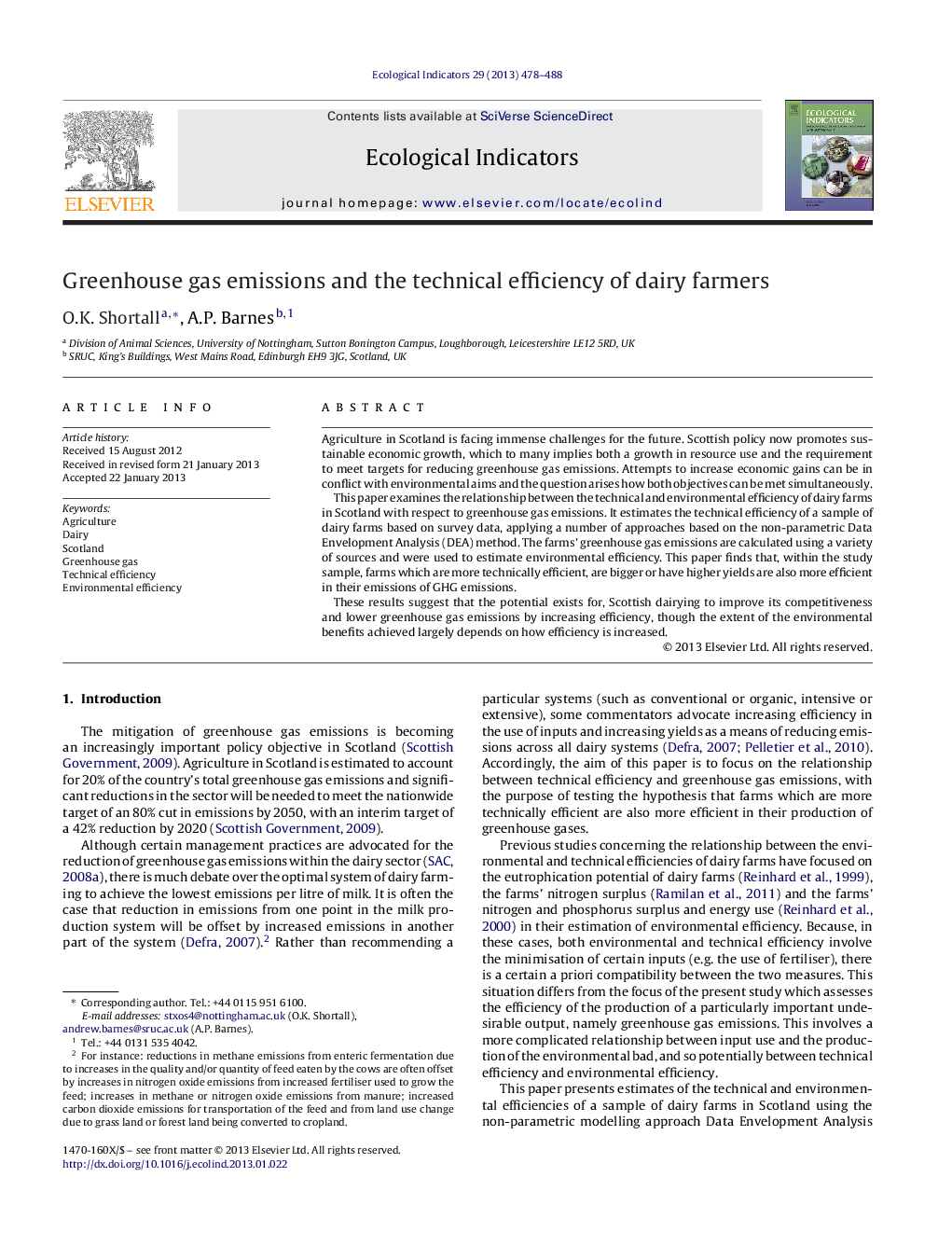| Article ID | Journal | Published Year | Pages | File Type |
|---|---|---|---|---|
| 4373503 | Ecological Indicators | 2013 | 11 Pages |
Agriculture in Scotland is facing immense challenges for the future. Scottish policy now promotes sustainable economic growth, which to many implies both a growth in resource use and the requirement to meet targets for reducing greenhouse gas emissions. Attempts to increase economic gains can be in conflict with environmental aims and the question arises how both objectives can be met simultaneously.This paper examines the relationship between the technical and environmental efficiency of dairy farms in Scotland with respect to greenhouse gas emissions. It estimates the technical efficiency of a sample of dairy farms based on survey data, applying a number of approaches based on the non-parametric Data Envelopment Analysis (DEA) method. The farms’ greenhouse gas emissions are calculated using a variety of sources and were used to estimate environmental efficiency. This paper finds that, within the study sample, farms which are more technically efficient, are bigger or have higher yields are also more efficient in their emissions of GHG emissions.These results suggest that the potential exists for, Scottish dairying to improve its competitiveness and lower greenhouse gas emissions by increasing efficiency, though the extent of the environmental benefits achieved largely depends on how efficiency is increased.
► Greenhouse gas emissions from 61 Scottish dairy farms were calculated based on survey data of inputs and outputs. ► DEA modelling was used to estimate the farms’ technical and environmental efficiency based on survey data and GHG calculations. ► Farms that were more technically efficient, bigger and had higher yields were more environmentally efficient. ► Scottish dairy farms can, to a certain extent, improve competitiveness and environmental performance by improving efficiency.
